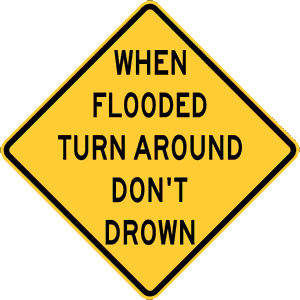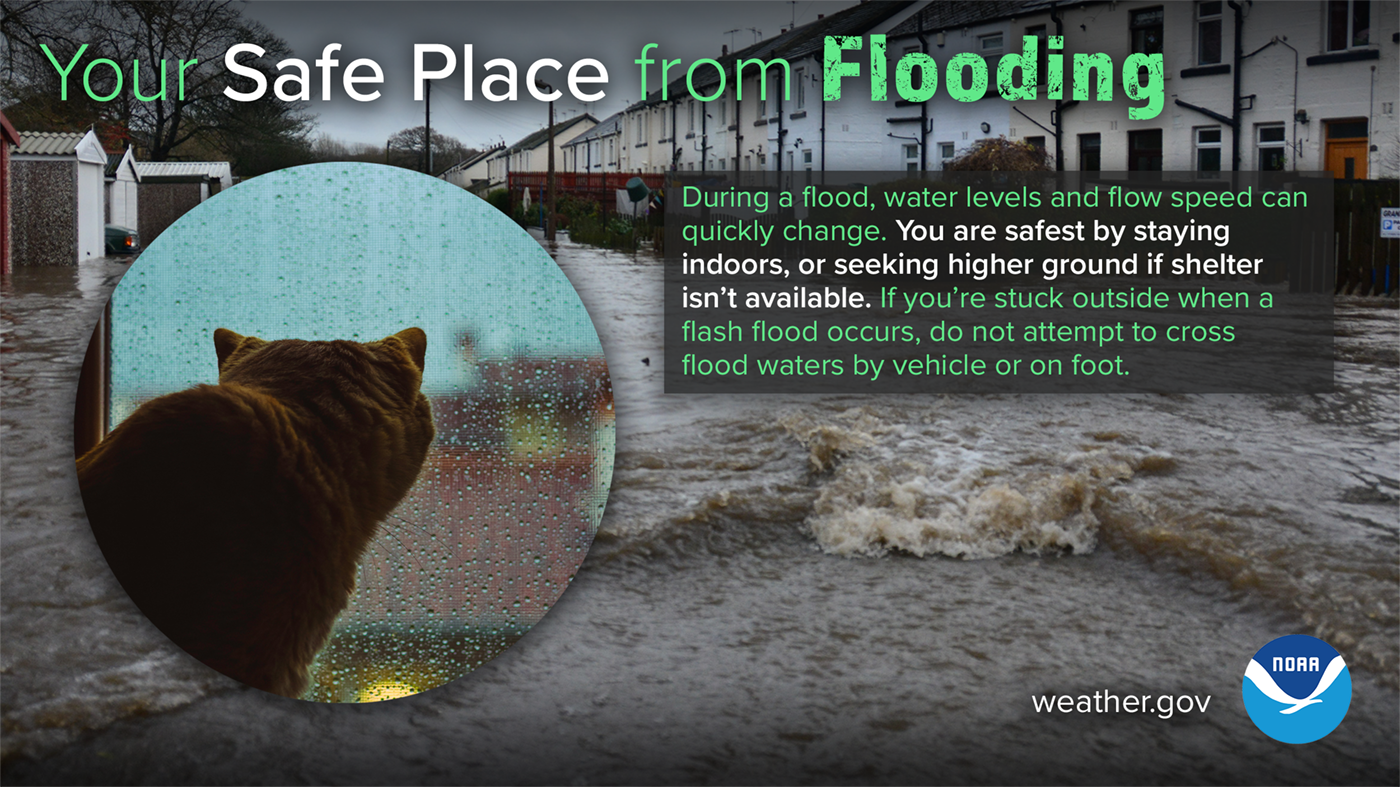
As we talked about in our March weather preview, Denver can see the entire gamut of weather conditions this time of year and our look back at this week in history shows that. There are of course plenty of the famous March snowstorms including big ones in 1992 and 1998. We also see the usual high winds such as was the case in 2000 and even extreme cold as we saw over an extended period in 1906.
- If you haven’t done so, be sure to follow us on Twitter and become a fan on Facebook! They are great ways to stay up to date with the latest weather news, forecasts and conditions!
6-7
In 1981…a storm dumped 4 to 8 inches of snow over higher elevations between Denver and Colorado springs. At Stapleton International Airport…north winds gusted to 16 mph and snowfall totaled only 2.5 inches.
In 1998…heavy snow fell over portions of metro Denver and the adjacent foothills. Snowfall totals included 11 inches at Chief Hosa…10 inches near Evergreen…8.5 inches in Broomfield…8 inches at Bailey…and 7 inches at both Standley Lake and Thornton. Elsewhere…snowfall across metro Denver ranged from 3 to 6 inches with 4.9 inches measured at the site of the former Stapleton International Airport. North winds gusted to 26 mph at Denver International Airport on the 7th. Several accidents occurred along area roads and highways when they became icy and snowpacked.
6-8
In 1932…snowfall totaled 6.3 inches in downtown Denver. Most of the snow…5.2 inches…fell on the 8th. Northeast winds gusted to 20 mph on the 6th.
7
In 1872…heavy rain started shortly after midnight and soon turned to sleet…which continued to just after sunrise…the ground at that time not even being white. At about 7:00 am the worst snow storm of the winter commenced and continued until 10:00 pm…snowing heavily nearly all the time. North winds averaged a sustained speed of 25 mph. About 8 inches of snow fell…but it drifted too much to obtain a direct measurement.
In 1901…northwest winds were sustained to 40 mph with gusts as high as 58 mph. The strong Chinook winds warmed the temperature to a high of 70 degrees.
In 1902…northwest winds were sustained to 45 mph with gusts to 53 mph.
In 1950…strong north winds at 40 mph with gusts as high as 60 mph produced a dust storm across metro Denver. At Stapleton Airport…blowing dust reduced visibility to as low as 1/4 mile for most of the day.
In 1972…northwest winds gusted to 51 mph at Stapleton International Airport. The Chinook winds warmed temperatures to a high of 64 degrees.
In 1984…a wind gust to 63 mph was recorded at Golden Gate Canyon west of Denver. West winds gusted to 39 mph at Stapleton International Airport.
7-8
In 1878…snow from the evening of the 7th until noon of the 8th totaled only 5 inches in downtown Denver. Apparent heavier snow over the plains along with strong winds drifted the snow into high drifts…which delayed trains for several days and caused a great loss of livestock. Melting of the snow caused a rise in Cherry Creek…which resulted in much damage. Precipitation from the storm totaled only 0.50 inch in Denver.
In 2000…high winds developed in and near the Front Range foothills…as well as parts of the northeast Colorado plains as another pacific storm system moved across the area. Several trees and power lines were downed near Blackhawk…Boulder…and in Coal Creek Canyon. About 30 homes in the Pinebrook Hills subdivision in Boulder were evacuated when downed power lines sparked a grassfire. The winds eventually shifted the fire onto itself…thus allowing firefighters to contain the two acre blaze. Several roofs were blown off barns…sheds… And garages. Two semi-trailers were blown over…one along c-470 between Golden and Morrison and another north of Denver on I-25. Wind gusts reached 101 mph on Rocky Flats…100 mph at the nearby national wind technology center…90 mph at Blackhawk and atop Blue Mountain…92 mph in south Boulder…73 mph in Coal Creek Canyon…72 mph in Golden…and 70 mph at Louisville. Northwest winds gusted to 45 mph on the 7th and to 49 mph on the 8th at Denver International Airport.
8
In 1878…winds started to increase at 4:00 am and blew steadily at sustained speeds of 36 to 40 mph with a maximum sustained speed of 60 mph around 11:00 am. Snowfall of 5.0 inches occurred in the city…but much more snow fell on the plains…which blockaded trains bound for the city for several days.
In 1898…northwest winds sustained to 53 mph with gusts to 60 mph warmed the temperature to a high of 67 degrees.
In 1908…light snowfall of 0.8 inch produced only 0.01 inch of precipitation. This along with the 0.10 inch of precipitation on the 21st resulted in the driest March on record with a total of 0.11 inch of precipitation.
In 1986…temperatures climbed from a record high minimum of 45 degrees to a record maximum of 72 degrees for the day.
In 2005…a vigorous cold front moved a wall of blowing dust across metro Denver during the mid-morning. At Denver International Airport…north winds sustained to 48 mph with gusts as high as 55 mph…along with very light rain which changed to snow…briefly reduced the surface visibility to 1 mile. A thunderstorm formed over Arvada. With the passage of the cold front…the temperature plunged 11 degrees in just 16 minutes at Denver International Airport where precipitation was only 0.01 inch along with 0.1 inch of snow.
8-9
In 1992…a major blizzard struck metro Denver. The storm was preceded by thunderstorms with small hail during the afternoon of the 8th. By evening…with the passage of a strong arctic cold front…snow began falling. Strong north to northeast winds at 30 to 40 mph with gusts to 52 mph produced near zero visibilities in blizzard conditions across metro Denver. By the morning of the 9th…snowfall amounts up to a foot and a half were reported with drifts of 2 to 4 feet. Many roads were closed including I-70 east of Denver and I-25 both north and south of Denver. Many homes and stores were temporarily without power. Snowfall amounts included: 18 inches at Conifer…13 inches in Boulder and Denver…12 inches at Brighton and Morrison…and 10 inches at Aurora. Snowfall totaled 12.4 inches at Stapleton International Airport where north winds gusting as high as 52 mph reduced the visibility to zero at times in heavy snow and blowing snow.
In 2002…high winds occurred in the foothills west of Denver. Winds gusted to 95 mph near Fritz Peak and to 73 mph near Nederland.
8-10
In 1989…unusually warm weather set four daily temperature records in Denver. The high temperature of 74 degrees on the 8th exceeded the record. Records were equaled on the 9th with a high of 77 degrees and the 10th with a high of 79 degrees. The low temperature of 42 degrees on the 10th set a new record high minimum for the date.
9
In 1918…northwest winds sustained to 44 mph with gusts as high as 52 mph occurred during the early morning hours.
In 1960…west-northwest winds gusted to 51 mph at Stapleton Airport.
In 1980…high winds were recorded in the foothills with a wind gust to 84 mph at Wondervu. Northwest winds gusted to 38 mph at Stapleton International Airport.
In 1982…strong Chinook winds buffeted the foothills in Boulder. Wind gusts of 60 to 90 mph toppled a microwave dish antenna and blew the shell off a camper. West winds gusted to 47 mph at Stapleton International Airport.
In 1986…high winds in the foothills with gusts of 60 to 70 mph were reported at Golden Gate Canyon and in Boulder. Northwest winds gusted to 35 mph at Stapleton International Airport.
9-10
In 1904…strong Chinook winds raked the city for 2 days. On the 9th…west winds sustained to 53 mph with gusts to 62 mph warmed the temperature to a high of 55 degrees. On the 10th… West winds were sustained to 48 mph with gusts to 54 mph. The high temperature was 58 degrees.
In 2013…a storm system brought heavy snow to areas in and near the Front Range Mountains and Foothills where storm totals included: 13 inches at Berthoud Pass SNOTEL…12 inches at Arapahoe Ridge; 11 inches…5 miles southwest of Golden; 10.5 inches near Kittridge; 10 inches at Lake Eldora and Pine Junction; 9.5 inches near Conifer…9 inches…near Bailey and 9 miles east-northeast of Nederland…Joe Wright and Strontia Springs. Along the Urban Corridor…some storm totals included: 8.5 inches at Highlands Ranch and near Morrison; 8 inches in Arvada; 7 inches…5 miles northeast of Westminster; 6.5 inches at Centennial…Lone Tree and Wheat Ridge; 6 inches in West Denver…Hygiene…Lyons and Thornton…5.5 inches in Broomfield; with 5 inches in Aurora and the former Stapleton International Airport. Across the Palmer Divide and northeast plains of Colorado…storm totals ranged anywhere from 2 to 10 inches. The combination of snow and strong wind produced blizzard conditions and forced the closure of Interstate 70 east of Denver. Sustained winds of 25 to 35 mph with gusts to 45 mph produced near zero visibilities at times and snowpacked roads. Snowdrifts from 2 to 4 feet deep were reported. As a result…many of the roadways became impassable. Officially…Denver International recorded 5.4 inches of snowfall on the 9th. In addition…a peak wind gust to 38 mph was observed from the north.
Continue reading March 7 to March 13: This week in Denver weather history →
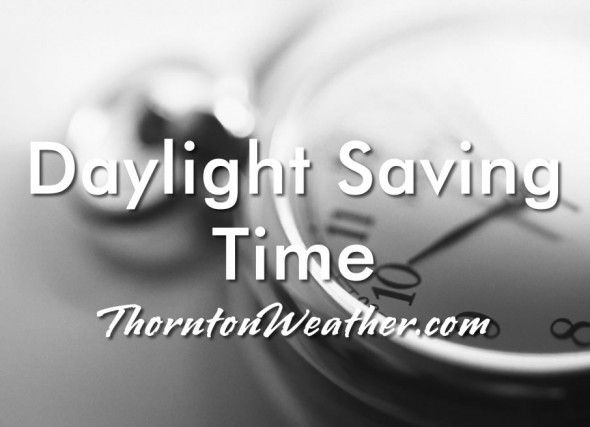

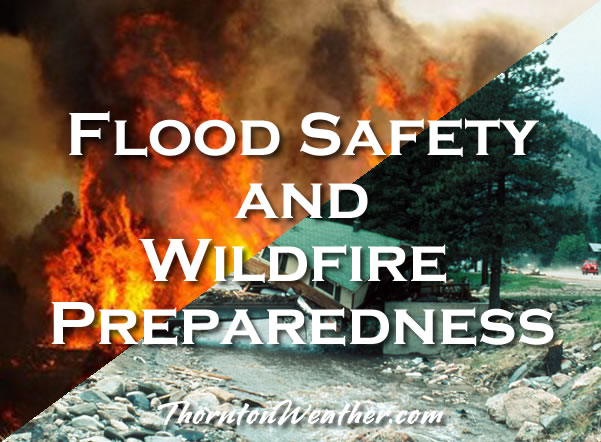
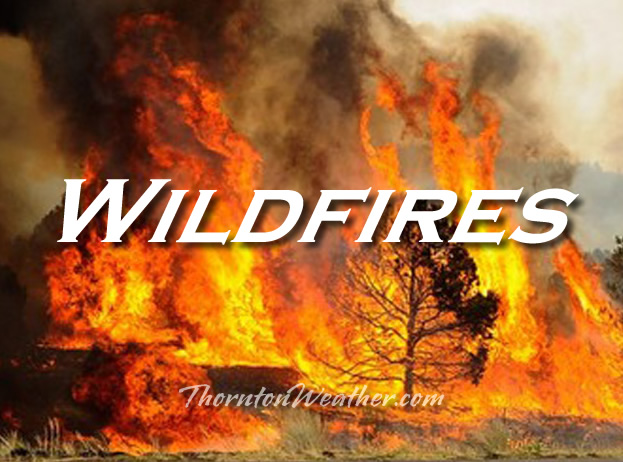 Floods and wildfires are arguably the two most common disasters Coloradans face with numerous such events occurring each year. To better prepare residents for the danger of these disasters, this week is Colorado Flood Safety and Wildfire Preparedness Week.
Floods and wildfires are arguably the two most common disasters Coloradans face with numerous such events occurring each year. To better prepare residents for the danger of these disasters, this week is Colorado Flood Safety and Wildfire Preparedness Week. Floods and wildfires are arguably the two most common disasters Coloradans face with numerous such events occurring each year. To better prepare residents for the danger of these disasters, this week is Colorado Flood Safety and Wildfire Preparedness Week.
Floods and wildfires are arguably the two most common disasters Coloradans face with numerous such events occurring each year. To better prepare residents for the danger of these disasters, this week is Colorado Flood Safety and Wildfire Preparedness Week.